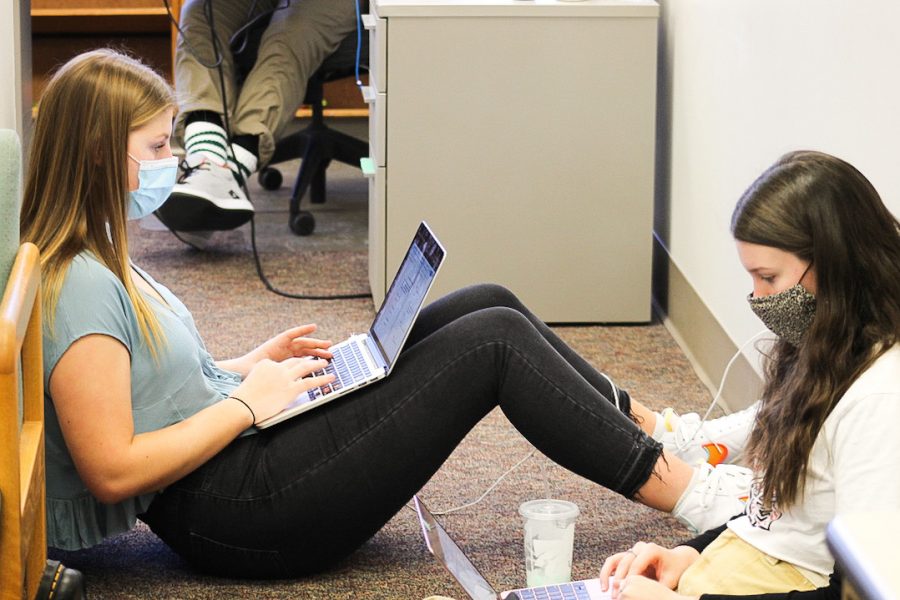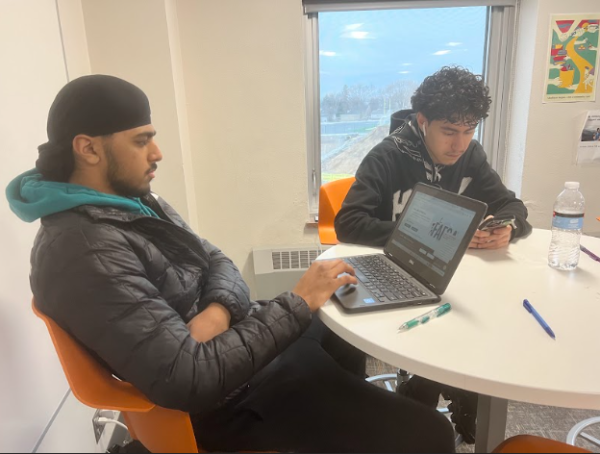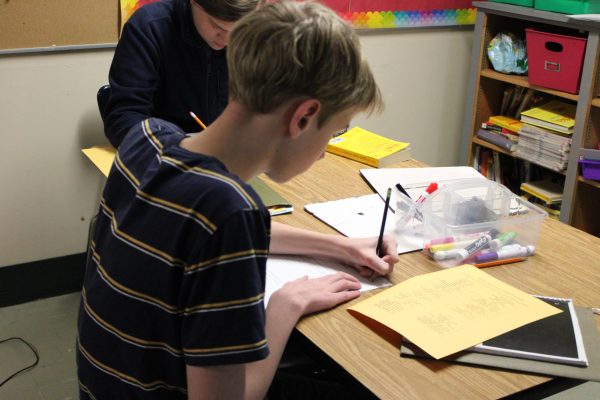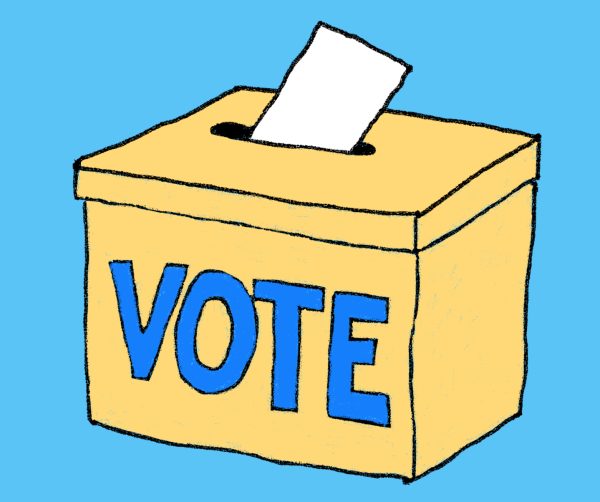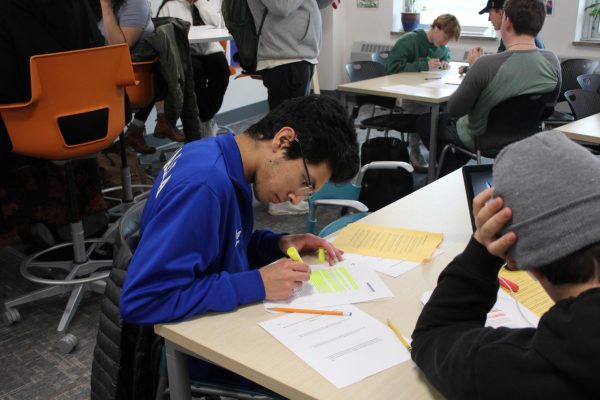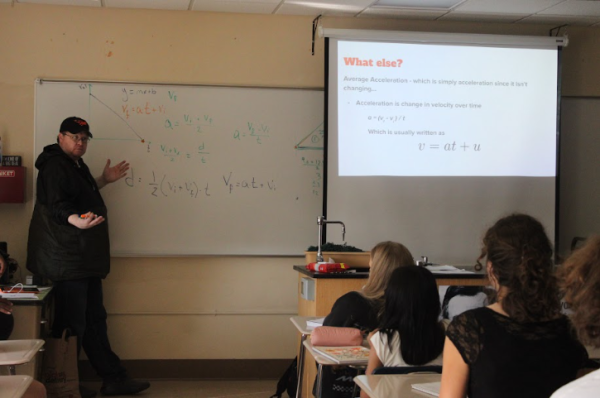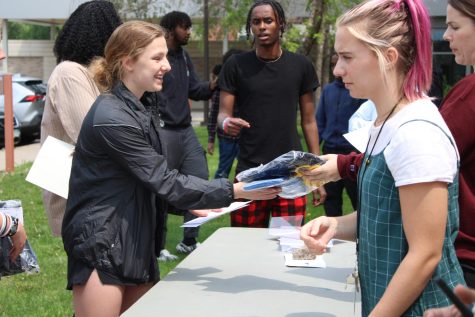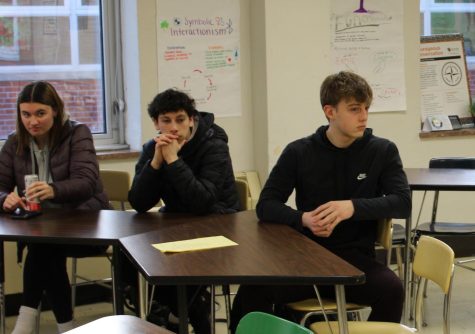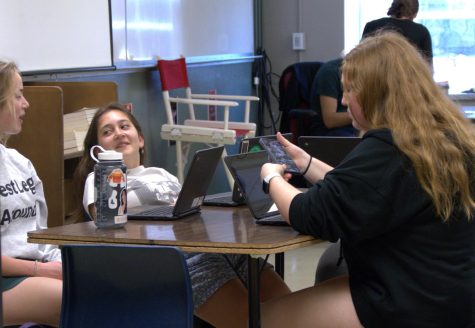Staff Editorial: Return to hybrid learning raises concerns
New hybrid plan may fall flat if not managed
Junior Murphy Fries and Ava Hanson work on their assignments in the Learning Lab Feb. 12. Seniors and freshmen will be returning to school Feb. 22, split into three cohorts with a new hybrid-learning plan.
February 15, 2021
Although distance learning has taken a toll on many of us, it may be a little too early to go back into school. Park introduced a plan which includes freshmen and seniors returning back to school for hybrid learning Feb. 22, with sophomores and juniors following on March 8. The students are split up into 3 cohorts, with A and B going into school and C staying in distance. However, this return to hybrid might not go as planned.
Returning to hybrid learning could become an issue for teachers because they have to focus on in-person kids as well as those online. Many teachers had trouble during the first period of hybrid connecting online students’ lessons to those for in-person. The Echo Editorial Board believes that hybrid learning will make it more difficult for teachers because they can’t teach both online and in-person at the same time without there being a disconnect.
Teachers now have to make an extra lesson plan for the in-person students, which will take a lot of time and energy. They also aren’t getting paid for any of this extra work — making it more difficult for teachers to create fun and engaging lesson plans for both sets of students.
There are a few possible solutions. In-person students could be prioritized for live teaching, while kids at home do on-demand homework rather than a class. This would take a lot of burden off of the teachers, however, it could create a disparity in how well certain kids are learning, especially the students who aren’t coming in at all and have to watch a video of the lesson which makes it harder for them to ask questions.
Another plan could be for teachers to adjust their lesson plans day-by-day with constant feedback from students. This would help the students learn more by helping the teacher instruct them in the best way possible. However, no plan would satisfy every student and this would require a lot of effort on the teacher’s part.
As a whole, the Echo Editorial Board encourages the administration to keep communication between students and teachers open, as it will be greatly needed in order to ease the transition into a hybrid schedule. The administration has done a great job taking feedback with online learning, but it’s important that they pay close attention to in-school learning and listen to the needs of both the students as well as the teachers as they proceed with the hybrid plan.
The return of hybrid learning could be beneficial to students, but the administration needs to keep close track of what students and teachers need and respond to feedback in order to execute it successfully.



